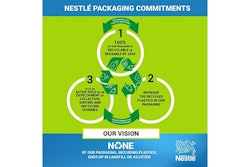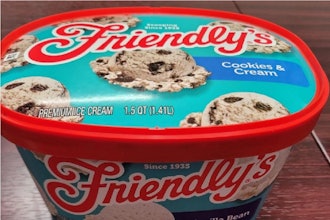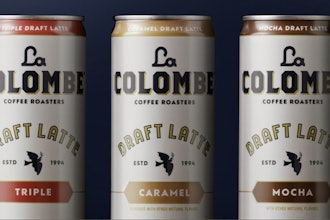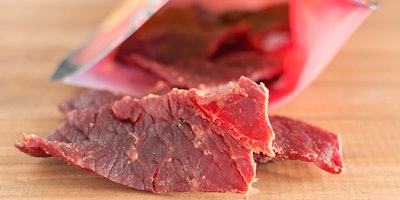
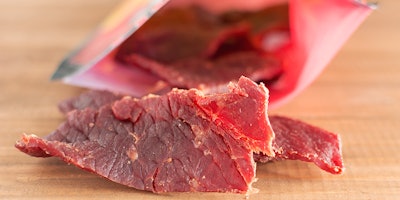 Flexible, reclosable packaging can preserve freshness and reduce waste.
Flexible, reclosable packaging can preserve freshness and reduce waste. Richard Custer
Richard CusterSnacking has made a major comeback, and savvy brands are taking advantage of the trend.
While snacking used to be viewed as indulgent eating of all things sweet and salty, it’s transformed into a healthy habit that fits the busy lifestyles of modern consumers. Ready-to-eat protein products stand out from the rest of the snack pack. Health-conscious consumers love them because protein provides energy, satiates hunger and has the potential to support weight management.
Yet, the move to snacking is about more than the type of food being sold. It’s about the experience that brands provide, which includes the way ready-to-eat protein snacks are packaged.
Who’s Snacking?
The short answer is nearly everyone. In 2015, Mintel reported that 94 percent of Americans snack at least once per day, and half of adults snack two or three times per day.
It’s the millennial generation, however, that appears to be adopting the snacking lifestyle with gusto. Millennials are four times more likely to snack than older generations, and Mintel found nearly a quarter of them are “super snackers” who do it four times a day or more. Millennials are now the most coveted consumer group, so we’re all paying close attention to their preferences.
The Meat Snack Market
The obvious choice for protein snacking is meat products such as jerky, sticks and bites. In 2017, Nielsen reported that the meat snack category was growing at a rate of seven percent annually, far outpacing the growth of snacks like potato chips and pretzels.
Millennials, however, are slightly less likely to spend money on meat snacks than older generations. Nielsen’s research suggests it is baby boomers who are spending the most on these products. That may be why you’re seeing many brands experimenting and reinventing the meat snack in an attempt to attract younger consumers.
IRI’s 2017 New and Emerging Snacking Trends report calls jerky “the new protein bar.” Indeed, there are brands selling jerky in some innovative ways. Whether it is protein sources such as pork and poultry instead of beef, ingredients and farming practices such as grass-fed beef, or a wide range of creative flavors, meat snacks are obviously being marketed toward millennials.
Yet another way to grab the attention of 20- and 30-somethings is through packaging and labeling. IRI reports that 52 percent of consumers are influenced by product packaging and labeling, but it jumps to 60 percent of 18-24 year olds and 62 percent of 25-34 year olds.
Packaging preferences often reflect the needs and lifestyles of the consumer. Let’s take a look at what’s driving packaging trends for protein snacks.
 Protein snacks, such as meat sticks, are being marketed to millennials using flavor variety and premium packaging.
Protein snacks, such as meat sticks, are being marketed to millennials using flavor variety and premium packaging.On-The-Go Convenience
Busy lifestyles and the always-connected culture have many consumers looking for quick fixes instead of full meals during the workday. People will have snacks at their desks or in the car rather than spending their lunch break eating a full meal.
Research backs up the notion that lunchtime is becoming snack time. IRI’s snack study found 67 percent of respondents say they snack around the middle of the day, and 58 percent do so in the afternoon.
Ready-to-eat protein snacks are an excellent solution for those who know a bag of chips will only keep them satisfied for so long. Products such as sausage and cheese bites can satisfy taste buds and appetites.
Packaging that meets on-the-go consumer preferences provides convenience through ease of use. Options such as the standup pouch fit the snacking trend well as they provide portability when combined with a resealable closure. Consumers can easily drop a pouch in a purse or backpack without worrying about spillage.
Another popular protein snack packaging trend is the rigid tray that separates different food items into compartments. They’re like Lunchables for adults and may invoke a sense of nostalgia among millennials. The drawback to this type of non-reclosable packaging is a lack of portability.
Portion Size Preferences
Many snack manufacturers are following the trend of single-serve packaging. Smaller packaging creates convenience for on-the-go snackers. Yet, there is also room for brands to differentiate themselves by thinking differently about portion sizes.
If, as consumer studies suggest, people are snacking multiple times per day, should we assume they always want single-serving portions? Instead of eating everything in one sitting, some consumers may want to nibble on a few servings of their protein snack throughout the day.
What if a brand used larger snack packaging designed to provide sustenance for an entire work week? In that case, closures like zippers and sliders would add significant value as reclosability would essentially become a necessity.
Another reason to use packaging beyond the single-serving size relates to the life changes many millennials are experiencing. Single-serve packages are made for single people. But, millennials are in the midst of shifting their lifestyles and habits. They’re getting married and starting families, which means healthy snacks may be enjoyed by millennial parents and sent with kids to school, daycare or soccer practice.
Watch for consumer shopping habits to change as younger moms and dads purchase large packages at places like warehouse club stores and supercenters. Nielsen’s research suggests meat snack purchases are spread somewhat evenly among retail channels. While jerky may be considered a popular convenience store impulse buy, the study found 24 percent of purchases occur at supercenters and 20 percent at warehouse clubs.
Reducing Waste
Another consumer trend to consider is the way shoppers feel about waste. They don’t want to throw away food, and many are annoyed by goods that are overpackaged.
The United Nations estimates more than 1 billion tons of food gets wasted globally each year. Mintel’s 2018 Packaging Trends report indicates consumers believe the right packaging can extend the shelf-life of food products. Indeed, a flexible package with features such as a zipper or slider will keep protein snacks fresher longer and protect flavor. Packaging that helps consumers avoid the guilt and frustration of throwing food away will add noticeable value.
Overpackaging also frustrates shoppers, especially those who are environmentally conscious and pay attention to whether brands are implementing sustainable manufacturing practices. Snack packaging needs to serve specific functions. If it’s not needed to protect the product or provide some sort of convenience, some consumers may view it as wasteful.
Do consumers really need a rigid package separating a few almonds from cheese and meat bites? Or, are there options that produce less packaging waste? Mintel says 52 percent of consumers prefer products with minimal packaging. Flexible packaging results in source reduction of raw material and requires less energy to transport. That means a smaller carbon footprint thanks, in part, to the fact it is lightweight and easy to ship.
Snack Packaging Innovation
Whether it’s ready-to-eat protein snacks or the myriad other product types with the potential to benefit from flexible packaging, developments in manufacturing are making it easier for brands and packagers to take advantage.
Leaders in the packaging industry are getting innovative with flexible packaging construction, which is giving brands more possibilities. Materials are being improved as well, which gives packagers better performance.
New technology includes machinery that boosts plant efficiency, sliders and zippers that are designed to work better on packaging equipment, and a wide variety of films that are making the standup pouch a fast-growing solution. Fitments such as spouts have even made flexible pouches feasible for liquid products. Reduced-scale slider systems are making it possible to add premium closures to smaller, snack-sized pouches.
There is an opportunity in the snack market, especially with ready-to-eat protein products, to use packaging to differentiate a brand from the competition. The right package with the right features and functionalities can set one product apart as the premium option. It could also become the family-friendly option, the sustainable option or the on-the-go option.
Packaging is evolving along with consumer preferences and lifestyles. The protein snack brands and packagers who are willing to adapt and innovate will be the ones who come out on top.
Richard Custer is Specialty Commercial Director at Presto Products.





